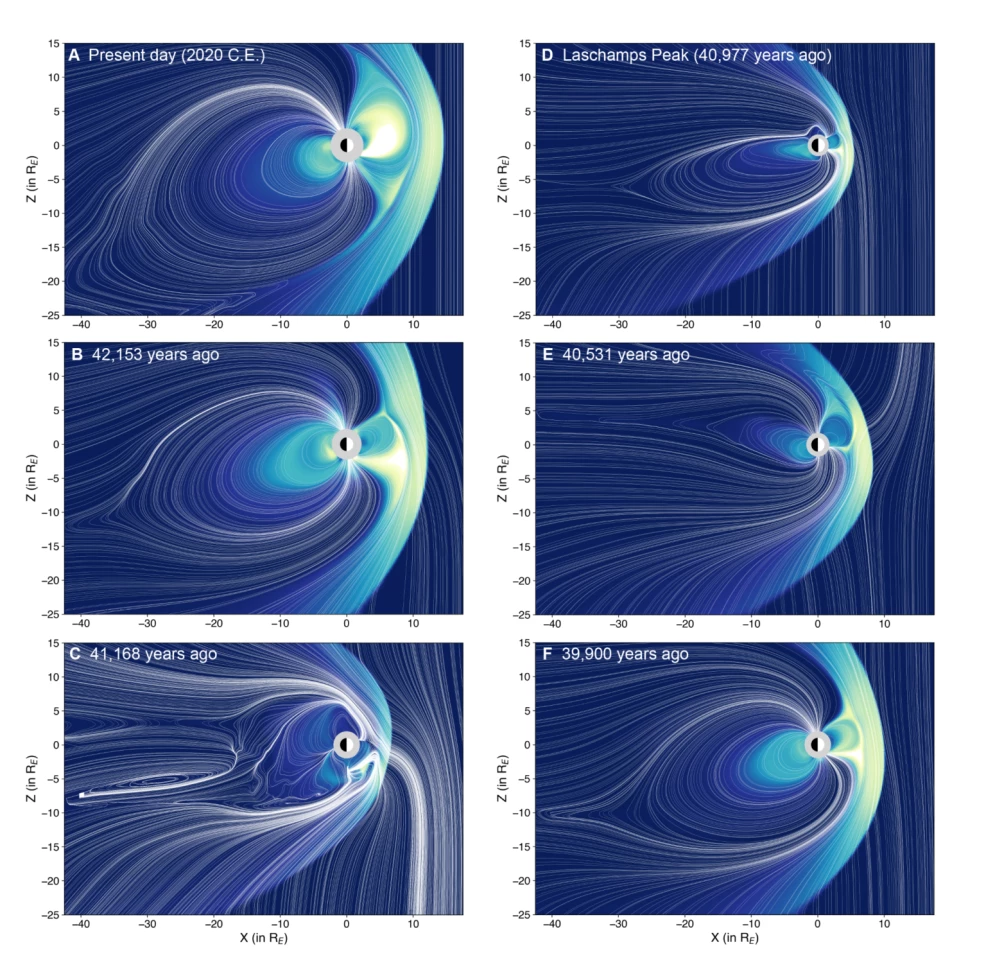If you ever travel back in time to hang out with Homo sapiens around 41,000 years ago, pack some sunscreen – or better yet, a tailored outfit, and seek out a cave shelter. New research from the University of Michigan suggests that during a cataclysmic polar reversal, our ancestors might have used these things to survive harmful solar radiation. Meanwhile, Neanderthals didn’t seem to get to grips with these innovations and faded out around the same time.
The movement in the Earth's molten outer core generates electric currents. These currents create a magnetic field that spirals around the globe, protecting the Earth by warding off harmful cosmic radiation. Currently, the magnetic field has two orientations: the North and South poles. This is why we see aurora at the poles where the magnetic field is the strongest.
However, these poles aren’t constant and have been known to wander from their geographic locations. This phenomenon is called a geomagnetic excursion, they have occurred over 180 times in the Earth’s history. The latest occurrence of this event, happening around 41,000 years ago, is known as the Laschamps excursion. A perfectly preserved ancient tree fossil recently offered researchers a unique glimpse into the geomagnetic turmoil caused by these catastrophic events.
During the Laschamps excursion, the North Pole meandered over Europe. Using a 3D reconstruction of Earth’s geospace system, researchers found that the Earth’s magnetic field weakened to about 10% of its normal strength. While the dazzling auroras might’ve amazed our ancestors, the weak magnetic field intensified ultraviolet and cosmic radiation. Cosmic radiation can thin the ozone layer and let in more UV light.

The 3D simulation also pointed out that the Laschamps excursion coincided with a particular period of humans living on the planet. A brief time when our Homo sapien ancestors were co-existing with Neanderthal neighbors. Such conditions would have posed serious health risks to our ancestors, from eye damage to birth defects.
So how did they cope? Archaeological evidence from the dating sites reveals a boom in the use of caves and tailored clothing, indicated by bone needles and awls. These clothes would have not only trapped warmth but also blocked harmful rays, allowing Homo sapiens to forage farther from their shelters.
More interestingly, the use of red and yellow ochre pigments turned up more frequently. Ochre, composed of iron oxide, clay, and silica, is more than just cave-art paint. When ground and applied to the skin, it functions effectively like a mineral-rich sunscreen.
“There have been some experimental tests that show it has sunscreen-like properties,” says Raven Garvey, U-M associate professor of anthropology. "It’s a pretty effective sunscreen. Its increased production and its association primarily with anatomically modern humans (during the Laschamps) is also suggestive of people's having used it for this purpose as well."
Garvey is clear to note the team's findings are highly correlational, so this study simply offers a novel hypothesis to help explain what happened around 41,000 years ago that led to the rise of Homo sapiens and the decline of Neanderthals.
The study was published in Science Advances.
Source: University of Michigan






